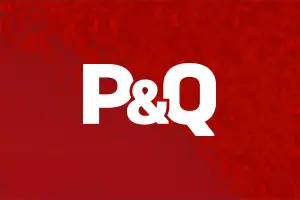Author
Cutting costs on heavy equipment
Every equipment owner needs an edge. Here are 10 easy ways for you to lower operating costs on your heavy equipment. Each job, machine and application is different, but there are a few universal things you can do with each piece of equipment to make its operation more practical and cost effective. Here’s a look at 10 things that can have a direct effect on your bottom line. 1. Control idle times Whether through telematics, idle management control features (i.e., one-touch idle, automatic shutdown) or through one-on-one operator coaching, equipment owners can save a significant amount of money in fuel costs and long-term engine costs by simply reducing engine idling. Excessive idling is a drain on fuel and adds unnecessary/non-productive hours to the engine, shortening its life and wasting the machine’s warranty. 2. Properly use and deploy your fleet For large fleets and decentralized operations – possibly with multiple quarries spread out across a region – it may be easy to overlook underused pieces of equipment. You might need a… Keep Reading
Tier 4 cool down
As manufacturers fill equipment with OAT coolant at the factory, it’s important to note coolant type before refilling, and understand its benefits. Tier 4 diesel engine technology has changed the way many construction equipment systems run – and that includes engine coolant. Tier 4 engine advances generally create higher combustion temperatures and cylinder pressures. Coolant must resist deposit buildup and other issues that can occur rapidly under these conditions. As a result, manufacturers are shipping Tier 4 Final machines factory filled with organic acid technology (OAT) coolant, a form of extended life coolant. Case Construction Equipment, for example, began shipping select machines with this coolant in December 2013, and it will expand this procedure across other product lines through 2016. According to Case, all of its Tier 4 Final machines with FPT engines in the greater-than-or-equal-to 56-kilowatt emissions category will have OAT coolant when they leave the factory. The factory will phase in OAT coolant at varying intervals through other emissions categories. Users will be able to identify whether a… Keep Reading
A case for SCR
As the industry shifts from Tier 4 Interim to Tier 4 Final, producers have decisions to make between SCR and EGR machines. Tier 4 mandates are a hot topic of conversation everywhere, from equipment dealer halls to quarries and loading yards. There’s a lot of information to digest, but it’s important to know that, based on equipment type and style, there are different Tier 4 solutions for different machines. Most construction equipment manufacturers have focused on two options for Tier 4 Final solutions on heavy equipment. Both involve an exhaust treatment system. One is selective catalytic reduction (SCR). The other is cooled exhaust gas recirculation (EGR). Both reduce particulate matter and nitrogen oxides (NOx) emissions in keeping with Environmental Protection Agency (EPA) mandates. NOx is produced when the engine is at its hottest. Particulate matter is created when fuel is not burned during combustion – usually when the engine is cooler. SCR reduces the formation of particulate matter in the combustion chamber and treats exhaust gases with diesel exhaust fluid… Keep Reading










